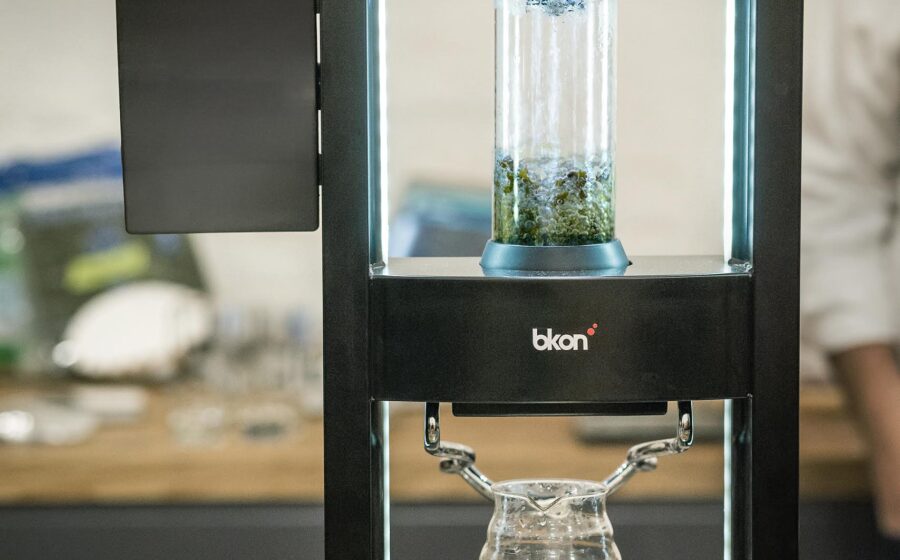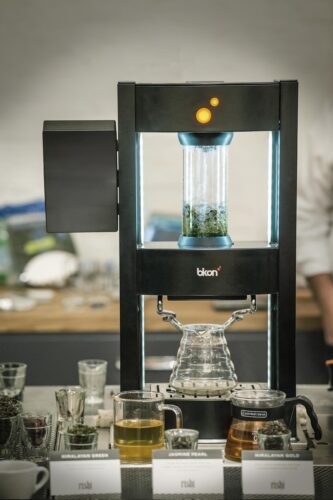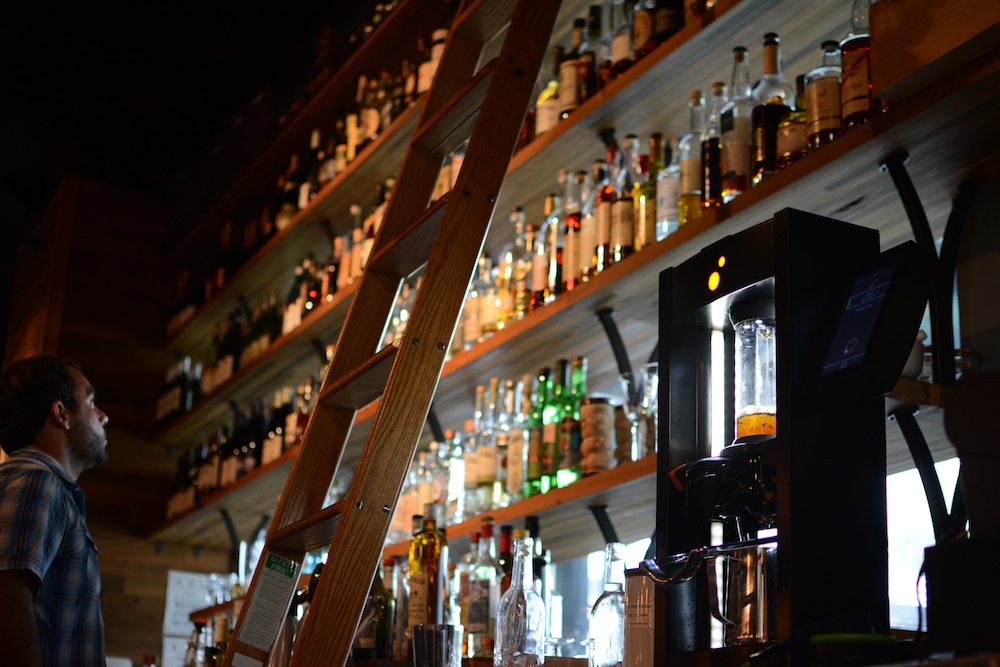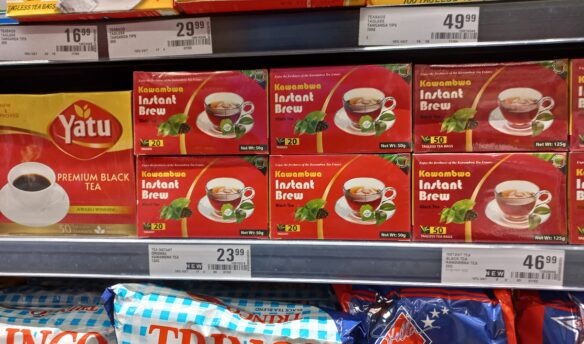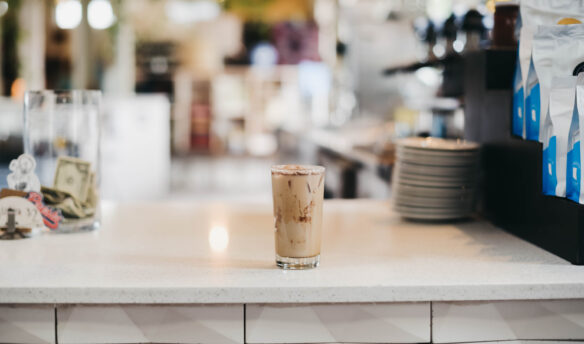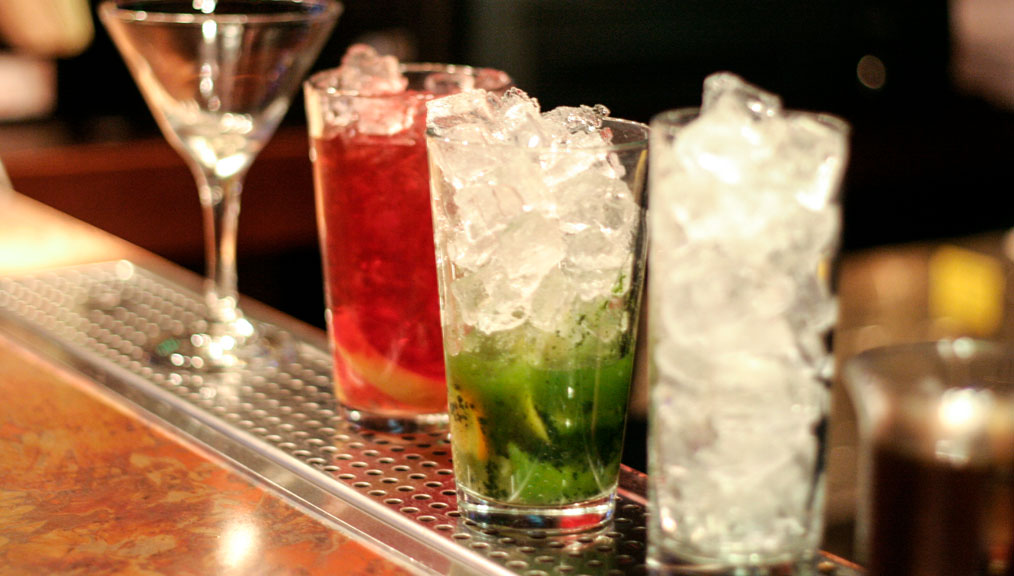[T]o those for whom tea is as much about ritual as it is flavor—and you are many—the notion of replacing gentle traditions like gong fu with space-age brewing technology may at first startle. But what if the beauty found in, say, the third infusion of a rolled oolong could be revealed in under two minutes? It’s now possible, and the brothers behind the BKON brewer are eager to turn retail tea service on its technological ear.
Employing a patented “Reverse Atmospheric Infusion” process, the BKON brewer—which looks a little like a countertop robot and nothing at all like a teapot—allows for a series of rapid-fire vacuum-based infusion and extraction cycles, the likes of which can perform heretofore unknown acts like completely unfurling and extracting a rolled oolong leaf on first brew. The brewer can also deliver heated water anywhere between 160-210 Fahrenheit on demand, which, combined with programmable brewing recipes, facilitates a level of precision that allows users of the brewer—which is designed and priced primarily for the retail café or tea shop market—to truly experiment and explore.
Originally conceived of only to brew coffee—the founders of BKON, brothers Dean and Lou Vastardis, were raised in a coffee-roasting family—the brewer’s true tea potential was first realized through development alongside Rishi, whose tea experts were impressed with the machine’s ability to quickly extract from the full surface area and stem of the tea leaf. This allowed for a flavor expression traditionally only (or never quite) reached by traditional steps of repeated infusions.
Though the Vastardis brothers at first knew more about tea than coffee, Dean Vastardis saw the interest in their invention as running parallel to an increasing curiosity among coffee people about tea brewing. Prototypes of the brewer were deployed to both coffee- and tea-minded people and businesses, like Atlanta chef Hugh Acheson’s Empire State South, where experimentation has flourished. From tea to coffee to spirits, the brewer has been a playground for recipe-testing and brew science in its recent years of development. Dean Vastardis says that botanical infusions are among their next big challenges.
“Hibiscus for example has played a really important role in development along the way,” said Vastardis. “Trying with different means to take a full-leaf hibiscus flower and get it infused and to extract the red and that sour note that comes from it is really something that takes time. And even with a lot of agitation, it only gets so far unless the leaves are cut down. Surface area rules always apply—but if you have full-leaf, wilted hibiscus flowers, those certainly march to the beat of their own drum, and that really goes for most botanical elements,” said the inventor, who pointed to the brewer’s capabilities to attenuate extraction levels for different elements of an infusion. ”
On the café floor, shop owners, tea brewers, and baristas can determine optimal recipes, program them in, and be assured of repeatability as well as the speed and efficiency to deliver complex teas swiftly to customers.
“You look at these herbal teas: you have a dried ginger, you have licorice root which is literally like a stick. You have flowers like hibiscus. Cinnamon. All of these things have completely different densities. And that’s very much a reason why, when you take some of these very, very hearty herbal teas, and you brew them….that’s why you might need five to six minutes if you’re steeping it naturally, and you don’t want to agitate it because agitation can overextract certain things, for example the licorice root, which if you extract it too far you get the taste of wood,” he continued.
“We’ve been able to show that because we can draw out those additional sugars, we outperform the standard preparation, but as far as herbal teas go, we can do the same exact thing. We can take a six minute tea in under two minutes and have more ability to increase the development of the ginger, or increase the development of the hibiscus, we can easily manipulate the flavor compounds just by adjusting the brewing profile,” said Vastardis.
What this flexibility really means is that on the café floor, shop owners, tea brewers, and baristas can determine optimal recipes, program them in, and be assured of repeatability as well as the speed and efficiency to deliver complex teas swiftly to customers.
The brewer “makes repeatability easy,” said Vastardis, “but more so people know that the tea is going to be presented exactly how they want it presented. Speed of service is a fortunate side effect of the brewing process, but that wasn’t the primary function of the design.”
BKON formally launches its product for sale to retailers this month, and has announced a deal with Whole Foods Markets to deploy an “innovative loose-leaf tea beverage concept” in partnership with Rishi this spring in the Midwestern US And on the coffee side, development of ideal recipes for coffee brewing—long in testing—have been given the final go-ahead. After this, what’s next? Perhaps chai.
“Exploring the innovation around chai lattes and seeing what kind of layers we can create infusing peppercorns and other botanicals into the milk, outside of the tea itself,” said Dean Vastardis.
“There’s a lot of potential for there to be a recreation of the chai latte as well, as natural sugars can be infused into the milk. We’re hoping to see innovations like that, but that’s not something we do a lot of driving on,” laughed the inventor. “We leave that to our culinary experts.”
—Liz Clayton is a food and beverage writer based in New York City.

